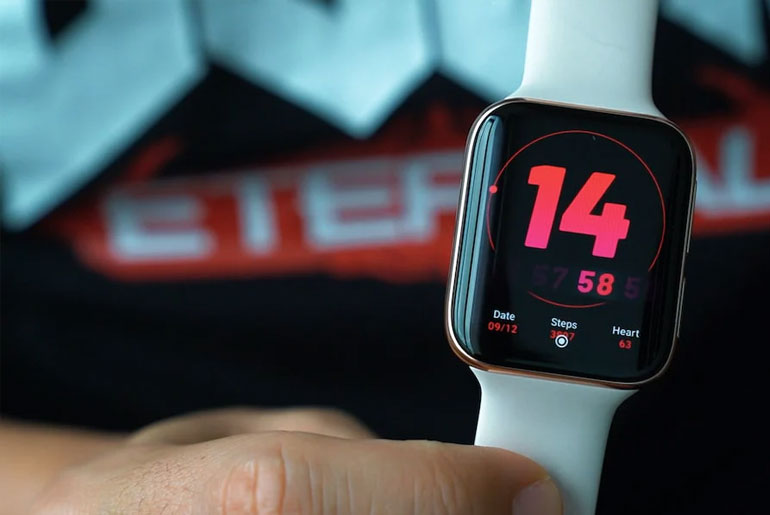The Future of Fitness Technology:
In the ever-evolving landscape of health and fitness, our changing needs are met with a transformative wave of technology. Beyond traditional workout gear, the latest fitness technologies are reshaping the way we approach exercise, offering innovative solutions for at-home athletes. These advancements extend far beyond the realm of sweatbands and leggings, providing a comprehensive and immersive fitness experience.
Gone are the days of relying solely on intuition for tracking progress. The future of fitness technology empowers individuals to monitor and analyze their performance with precision. Smart devices and wearables allow users to keep a close eye on various metrics, from heart rate to calories burned, providing valuable insights into their fitness journey.
Virtual connectivity has become a cornerstone of the modern fitness experience. With the rise of technology, individuals can now engage in virtual training sessions with personal trainers, breaking down geographical barriers and bringing expert guidance directly into their living rooms. This shift not only enhances accessibility but also fosters a personalized approach to fitness, catering to individual goals and preferences.
The boundaries of physical space are no longer limitations to outdoor enthusiasts. Fitness technology now offers the ability to virtually transport oneself to scenic locations, transforming mundane workout settings into immersive experiences. Whether cycling through tree-lined paths or jogging along a picturesque coastline, individuals can escape the confines of their homes while staying within the comfort of familiar surroundings.
Fitness Technology:
The latest trend in fitness is the integration of sophisticated exercise equipment with cutting-edge technologies such as augmented or virtual reality and artificial intelligence, collectively known as fitness tech. These devices leverage connectivity, tracking capabilities, and streaming technology to create an immersive and engaging workout experience for users.
Primarily designed for home use, fitness tech enables athletes to circumvent crowded gym environments and avoid the hassle of waiting for machines. Wearable technologies like smartwatches and health-focused mobile applications further extend the reach of fitness tech, allowing users to stay active on the go.
The user-friendly features of fitness tech extend beyond individual use, fostering communities of like-minded individuals. Home gym systems and other fitness technologies provide platforms for users to connect, compete, and share their fitness journeys and S.M.A.R.T. fitness goals. This sense of community and support is a notable departure from the traditional notion of needing to visit fitness clubs to find a group of like-minded individuals.
In essence, fitness tech has transformed the fitness landscape by making it possible for people to connect virtually, feel supported and motivated, and achieve a high-quality workout experience at home comparable to what they might find in local fitness facilities. This convergence of technology and fitness not only enhances convenience but also opens up new avenues for social interaction and mutual encouragement among fitness enthusiasts.
Fitness-Related Technologies:
1. Fitness trackers:
Fitness trackers, encompassing wearable technology, have gained significant popularity in recent years. These devices systematically monitor a user’s fitness metrics, including steps taken, speed, and stairs climbed, while also incorporating health-focused features such as sleep and heart rate tracking. Accessibility is a key feature of most fitness trackers, ensuring that real-time data is readily available through internal databases or accompanying applications.
These trackers offer versatility by providing various physical activity modes suitable for both indoor and outdoor fitness routines. While many users utilize these devices for accurate step counting and activity level monitoring, high-end fitness trackers elevate the experience by supporting step-less workouts, such as cross country skiing and kayaking. This versatility allows users to seamlessly integrate their fitness trackers into diverse workout environments.
Regardless of the workout setting, fitness trackers play a pivotal role in familiarizing users with the progression and performance of their bodies. The inclusion of intuitive and responsive touch screens in many wearable devices enables users to effortlessly assess their daily activities. Connectivity to companion apps further enhances the user experience, enabling synchronization with a network of fellow athletes or friends.
The transformative impact of fitness trackers on the fitness experience is multifaceted. First and foremost, they offer effortless tracking and monitoring of daily workouts, providing valuable insights into physical activity patterns. Beyond individual tracking, these devices create a digital connection to a community of fitness enthusiasts, fostering a sense of shared goals and accomplishments. This communal aspect contributes to motivation and a supportive environment.
Moreover, fitness trackers empower users with personal agency, allowing them to customize their fitness journey based on the data and feedback provided. This customization enhances the overall effectiveness and satisfaction of the workout routine. Finally, these trackers offer vital information regarding personal health and wellness, including metrics like heart rate, recovery, calories burned, and VO2 max. This comprehensive data enables users to make informed decisions to optimize their workout experiences and overall well-being.
2. Smart home fitness equipment:
Smart home fitness equipment represents a revolutionary shift in the fitness landscape, leveraging advanced technologies to transform the workout experience. These cutting-edge devices are not just about physical activity; they bring a new level of connectivity, interactivity, and personalization to the fitness routine.
One standout example is the lululemon Studio, a state-of-the-art fitness mirror that integrates seamlessly into home gyms. This nearly invisible piece of equipment offers immersive at-home workouts through live and on-demand instructor-led classes. The mirror’s interactive features allow fitness enthusiasts to receive real-time cues and form corrections during live sessions, fostering a sense of connection with instructors and other members. This not only makes home workouts more engaging but also provides the convenience of accessing high-quality fitness classes without leaving the comfort of one’s home.
The integration of smart technologies extends beyond interactive mirrors. Smart weights, designed to pair with platforms like lululemon Studio, contribute to a comprehensive fitness experience. These smart weights collect personal workout data, track progress, offer form corrections, and monitor repetitions. This level of feedback ensures that users can fine-tune their workouts, stay motivated, and achieve their fitness goals more effectively.
Other innovations in the smart fitness market include boxing gloves with built-in sensors to automatically detect movement and track progress, as well as smart ropes designed for heart rate-raising, jump-roping excellence. These technologies enhance the diversity of workouts and provide users with a dynamic and engaging exercise routine.
Moreover, smart fitness equipment often incorporates artificial intelligence, allowing for personalized workout experiences. Through data analysis and machine learning, these devices can adapt to individual fitness levels, preferences, and goals, offering tailored recommendations and adjustments. This personalization contributes to a more effective and enjoyable fitness journey, keeping users motivated and committed to their routines.
The convenience of accessing one-on-one lessons led by experienced instructors from the comfort of home is another transformative aspect of smart fitness equipment. This accessibility opens up new possibilities for individuals seeking expert guidance and motivation, regardless of their location or schedule constraints.
Sleek designs characterize these modern home gym essentials, making them suitable for any home environment. The aesthetic appeal of smart fitness equipment ensures that users can integrate these devices seamlessly into their living spaces, creating a home gym atmosphere that is both functional and visually pleasing.
3. Fitness apps:
At-home fitness apps have emerged as transformative tools in the fitness landscape, residing conveniently within our smartphones and providing access to a diverse array of fitness programs. The proliferation of these apps, fueled by fitness entrepreneurs and influencers, has created a bountiful selection for smartphone users. While many smart fitness devices have their own apps, there is a wealth of independent apps specifically designed for convenient and effective stay-at-home workouts.
One of the key transformations brought about by at-home fitness apps is the provision of convenient and quick workouts that can be performed anytime and anywhere. This flexibility breaks down barriers to regular exercise, accommodating various schedules and lifestyles. Users no longer need a dedicated gym space, as these apps empower them to integrate fitness seamlessly into their daily routines.
The array of workout activities offered by these apps caters to individuals of all fitness levels, from beginners to advanced enthusiasts. Whether someone is interested in yoga, weight training, or high-intensity interval training (HIIT), there is a program suited to their preferences and goals. This inclusivity ensures that users can find workouts that align with their fitness levels and evolve with their progress over time.
Easy-to-access performance tracking is another transformative aspect of at-home fitness apps. These apps often come equipped with features that allow users to monitor key metrics such as heart rate, calories burned, and workout duration. The real-time feedback not only keeps users motivated but also empowers them to make informed decisions about their fitness routines, fostering a sense of accountability and progress.
Moreover, many at-home fitness apps offer various subscription features that elevate the overall fitness experience. Subscribers gain access to premium content, personalized fitness plans, and exclusive features, allowing them to tailor their workouts to their specific needs. This subscription model enhances user engagement, providing added value and customization to the fitness journey.
4. Virtual reality fitness:
Virtual reality (VR) fitness introduces a groundbreaking dimension to the workout experience, transforming exercise from a chore into an immersive, gamified adventure. In a world where balancing professional and personal responsibilities can make traditional workouts challenging, VR technology provides a solution that engages users in a whole new way.
The key transformation lies in the immersive workout experiences that VR offers. By transporting athletes into gamified environments, users can escape distractions and laser-focus on their fitness journey. This not only increases concentration but also transforms the exercise routine into an enjoyable, game-like experience. The visual elements, whether scenic mountain landscapes or interactive opponents, create an exhilarating atmosphere that keeps users motivated and captivated throughout their workout.
One of the significant advantages of virtual reality fitness is the convenience of at-home workouts, eliminating the need to tie laces for a trip to a crowded gym. Users can embark on their fitness journey within the comfort of their homes, making exercise more accessible and appealing to those who may otherwise avoid traditional workout settings.
Virtual reality fitness also offers a diverse range of workouts in various locations, further enhancing the user experience. Whether users prefer boxing, rowing, dancing, or cycling, the virtual environment adapts to accommodate different workout preferences and skill levels. This versatility ensures that individuals can tailor their exercise routine to match their interests and fitness goals.
Moreover, the social aspect of virtual reality fitness adds another layer to the experience. Exercise enthusiasts can invite friends and family to join in the activities, fostering friendly competition and camaraderie. This not only fuels great workouts but also strengthens relationships, turning fitness into a shared and enjoyable activity.
5. Recovery trainers:
Recovery trainers are revolutionizing the fitness experience by introducing a range of high-tech solutions dedicated to enhancing the crucial recovery phase of a fitness routine. Recognizing the importance of rest and rehabilitation, these innovative products contribute to both mental and physical well-being, offering users a comprehensive approach to their overall fitness journey.
One significant transformation brought about by recovery trainers is the provision of at-home treatments and rehabilitation. With products such as smart water bottles, posture enhancers, and muscle stimulators, users can jumpstart or improve their recovery process without leaving the comfort of their homes. This accessibility eliminates barriers to effective recovery, making it easier for individuals to incorporate essential recovery practices into their daily lives.
The integration of intuitive apps and features is another key aspect of how recovery trainers enhance the fitness experience. These apps offer a personalized approach by monitoring various performance metrics, including sleep habits, resting heart rates, respiratory rates, and sleeping patterns. The insights provided empower users to make informed decisions about their recovery routines, ensuring that they align with individual needs and optimize the overall effectiveness of their fitness regimen.
Moreover, recovery trainers feature functional, state-of-the-art technologies designed to address specific aspects of well-being. Smart water bottles encourage hydration, posture enhancers promote better alignment, and foam rollers with high-intensity vibration speeds rehabilitate muscles. The inclusion of these technologies goes beyond mere convenience; it provides users with tools tailored to their unique requirements, enhancing the effectiveness and efficiency of their recovery efforts.
In summary, recovery trainers transform the fitness experience by offering at-home treatments, intuitive performance monitoring through apps, and functional, state-of-the-art technologies. These products empower individuals to prioritize and personalize their recovery routines, creating a more holistic and accessible approach to fitness. As a result, users can optimize their mental and physical health and well-being, ensuring a well-rounded and sustainable fitness journey.
Disclaimer:
The information contained in this article is for educational and informational purposes only and is not intended as a health advice. We would ask you to consult a qualified professional or medical expert to gain additional knowledge before you choose to consume any product or perform any exercise.









